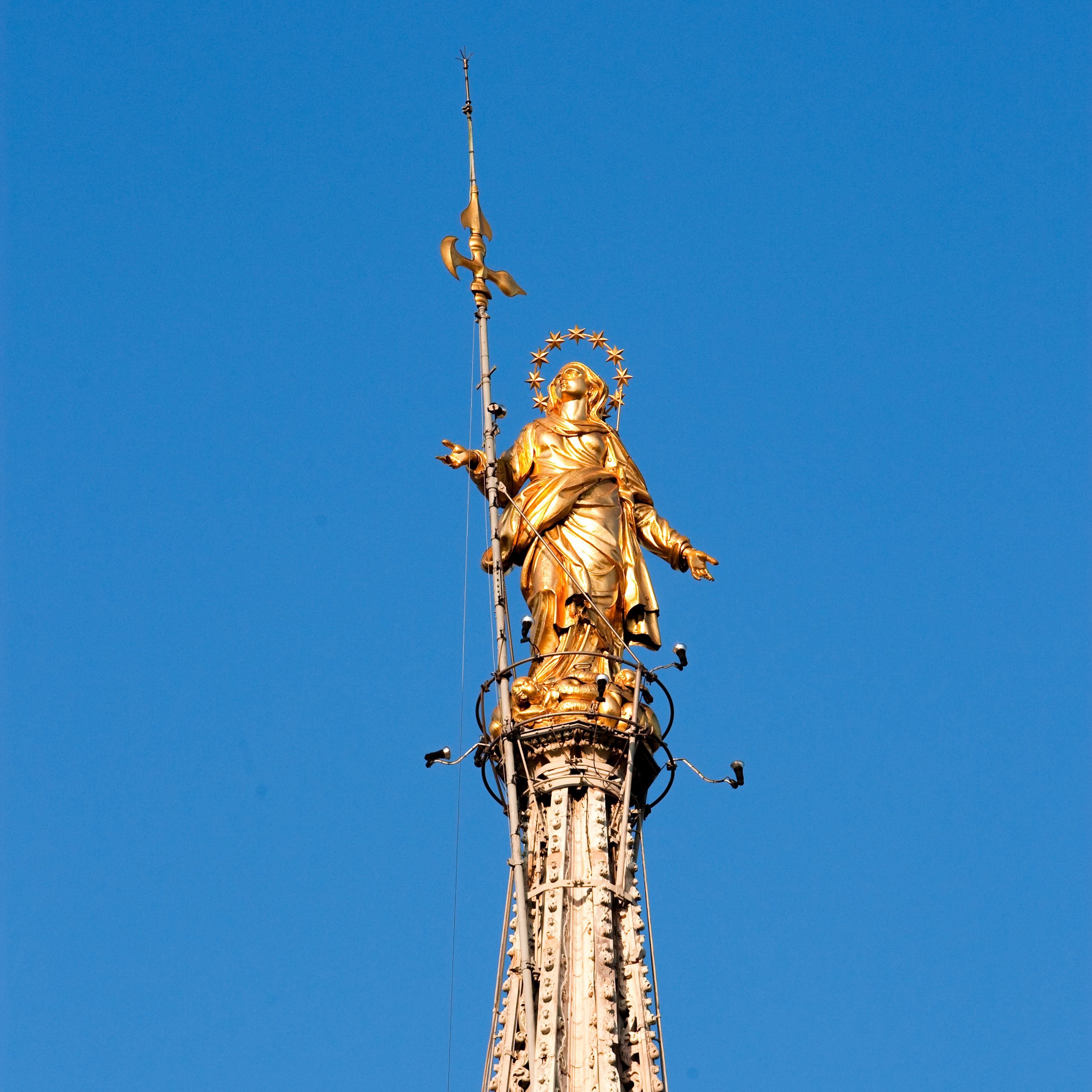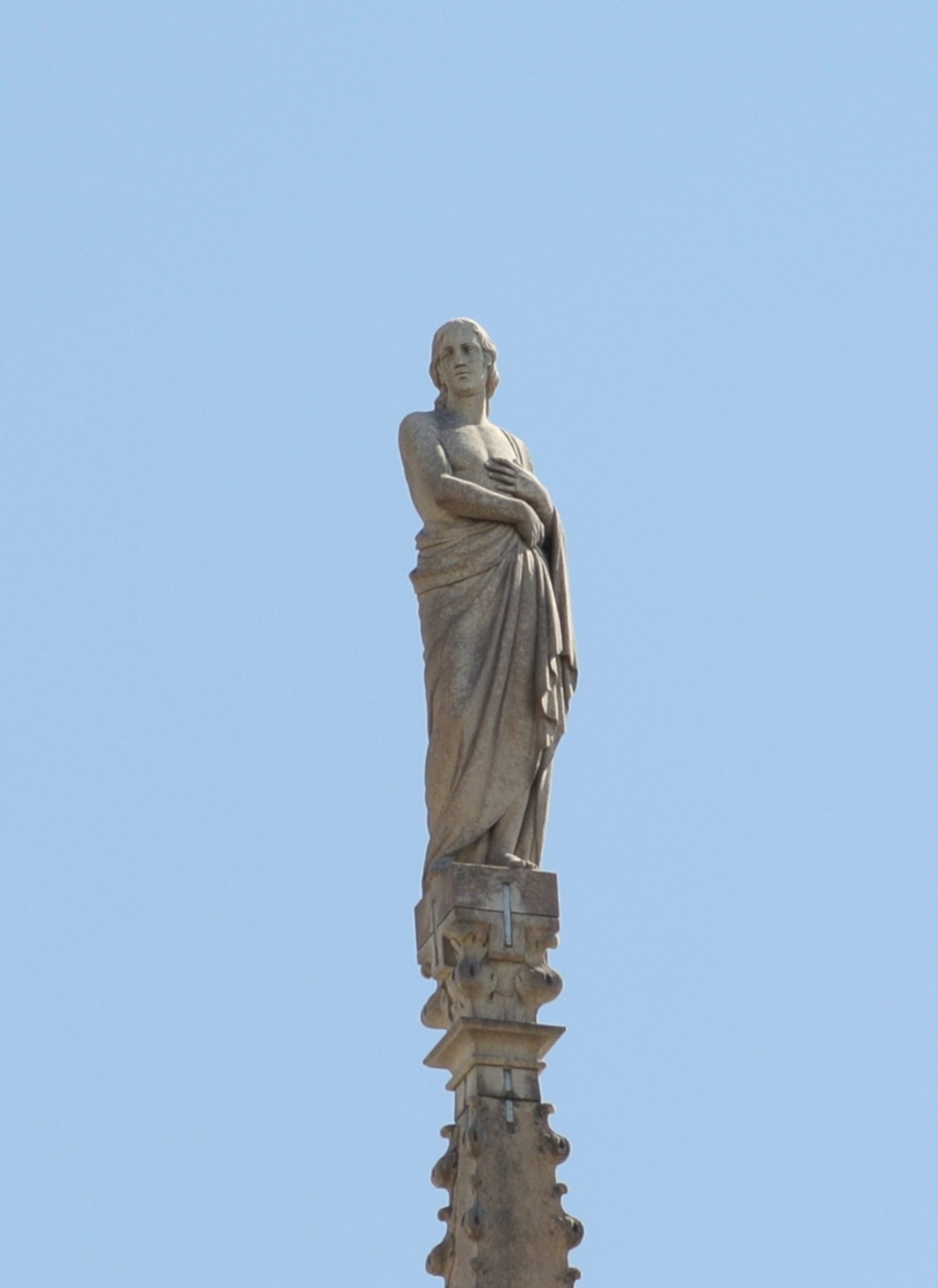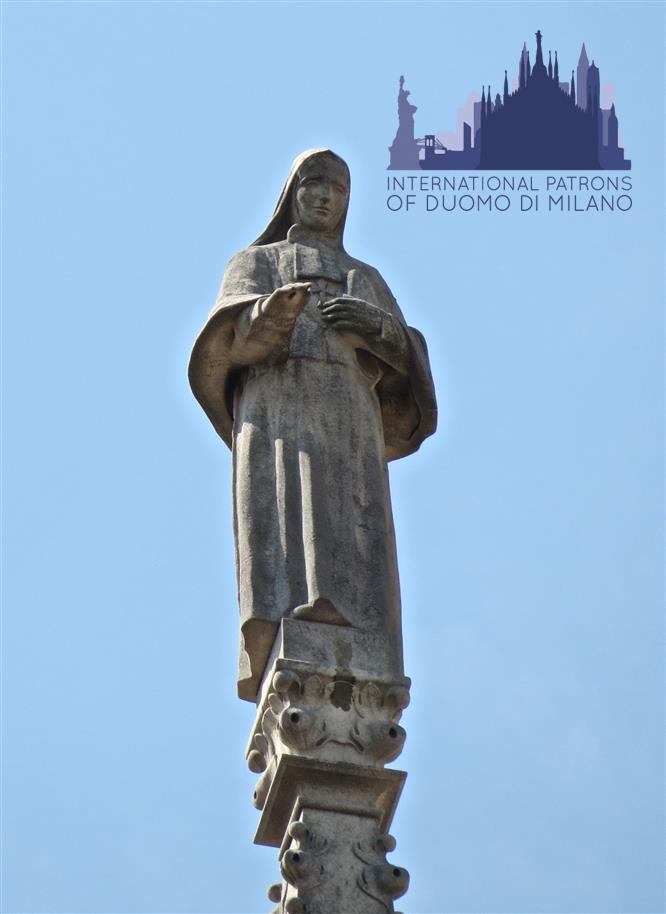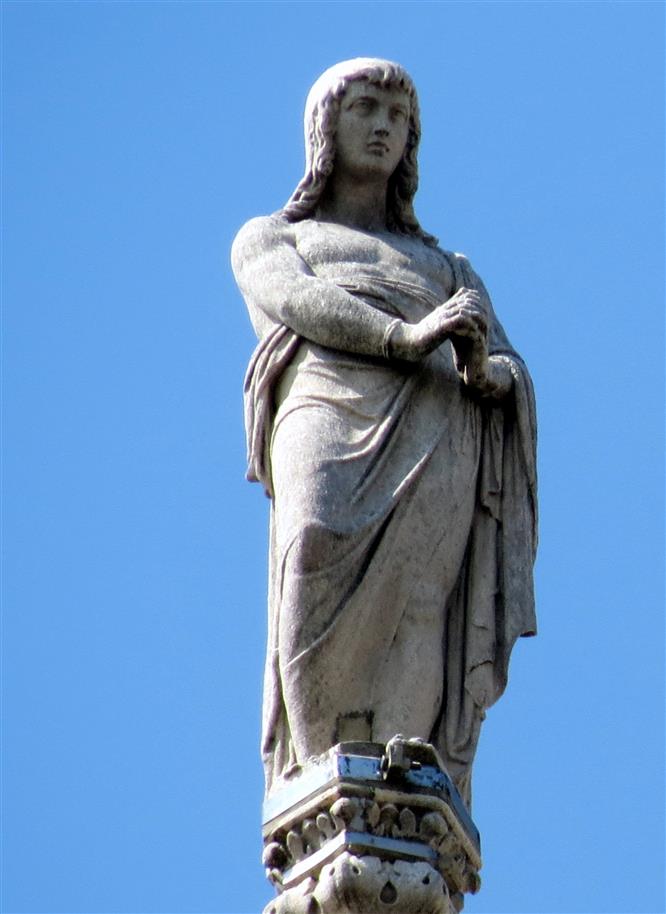The few notices about his existence are provided by St. Paulinus of Nola in his Christmas poems, written from 395 to 409 in order to collect the oral tradition learned in the Nola area. According to St. Paulinus, Felix was born in Nola in the second half of the III Century, son of a rich Syrian who moved to Italy for business. Felix became priest and collaborator of Maximus, at the time Bishop of Nola. He was imprisoned and tortured during the prosecutions of Christians. The tradition states that an angel freed him and healed the sick Bishop Maximus who, in the mean time, had found refuge in a secret location. When the prosecutions started again, Felix avoided capture hiding inside a tank. In 313 He came back to Nola, where he refused the proposal of becoming Bishop and lived the rest of his days in poverty. Despite not having been killed, St. Felix is recognized as Martyr by the Catholic Church for the many sufferings he faced during his life. His body in buried inside the early Christian Churches in Cimitile. His tomb used to be called “Ara Veritatis”, because it was thought to be particularly effective in unmasking the untruth.
ST. FELIX
Symbol: Pastoral staff





 Tiburio
Tiburio

